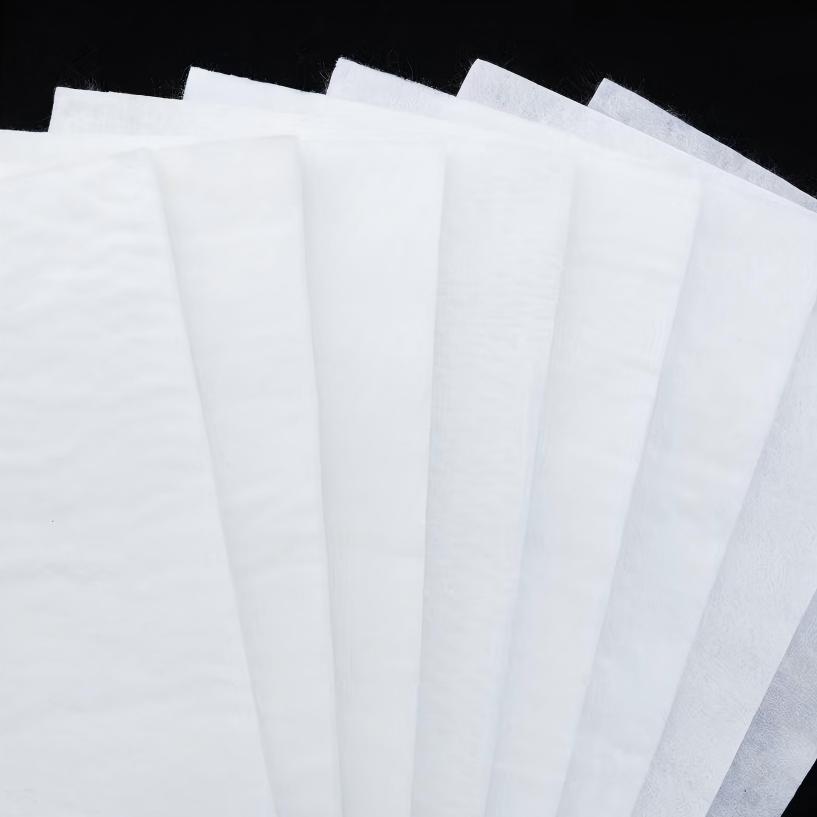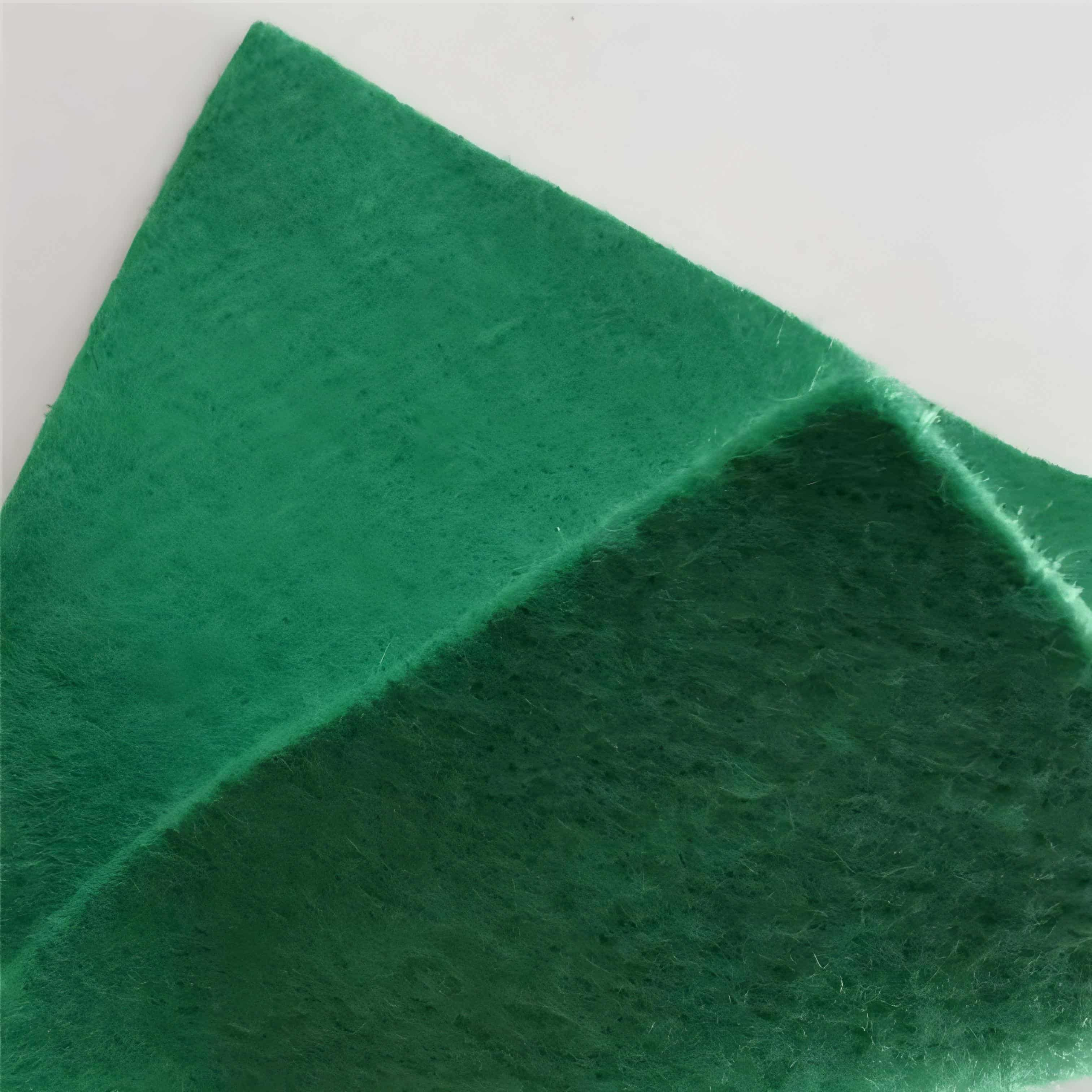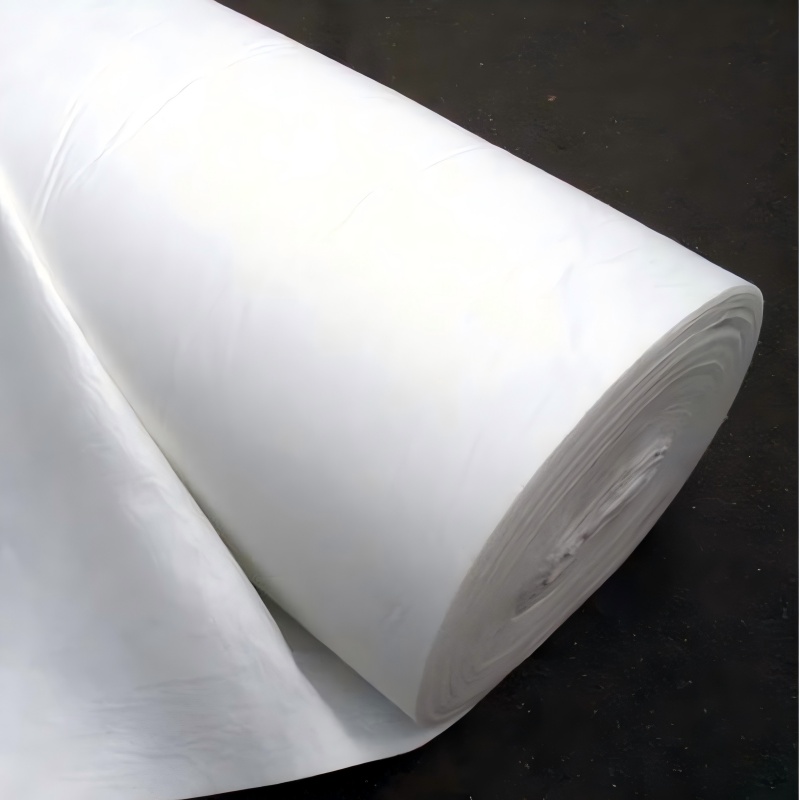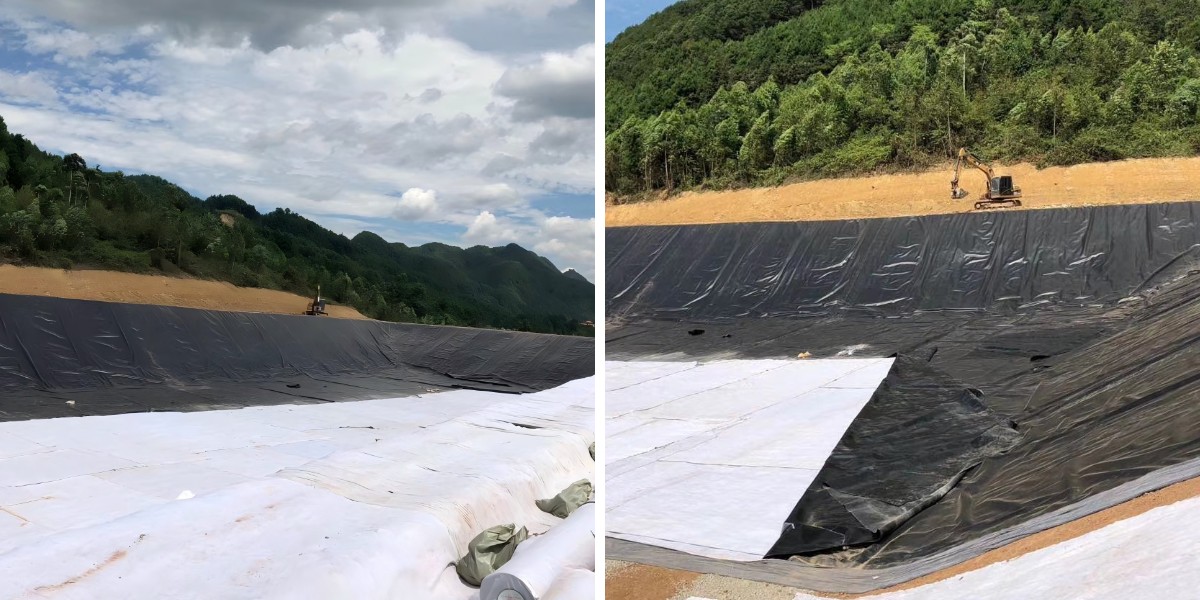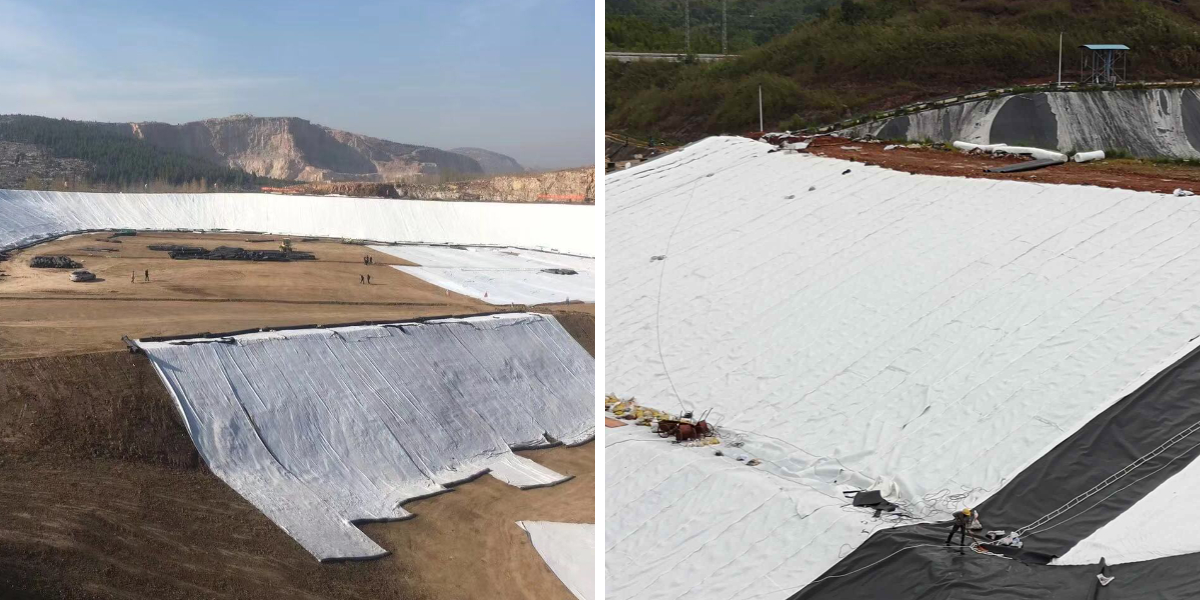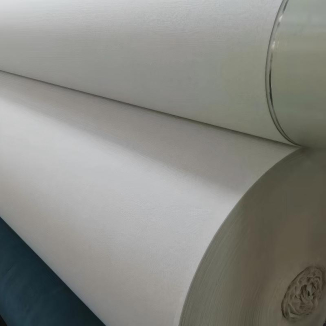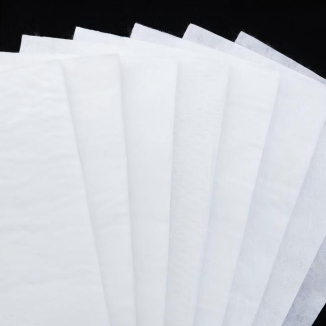Polyester Geotextile Fabric
1. Super durability: polyester material is anti-aging, anti ultraviolet, durable in outdoor and complex soil environment, not easy to degrade and damage.
2. High mechanical strength: Excellent tensile, tear resistance, and burst strength, which can effectively disperse soil stress and enhance the stability of engineering structures.
3. Efficient filtration and drainage: Accurate pore size distribution enables rapid drainage while intercepting soil particles, preventing the loss of fillers and pipe surges.
4. Chemical corrosion resistance: Strong resistance to acidic, alkaline, salt and other chemical substances, suitable for various harsh geological environments, with a wide range of applications.
Products Introduction:
Polyester Geotextile Fabric is a geosynthetic material made from polymer polyester fibers as the core material, processed through advanced techniques such as needle punching, weaving, or hot melt. With the excellent performance and special weaving structure of polyester material itself, this product undertakes key functions such as filtration, drainage, reinforcement, and isolation in the field of geotechnical engineering. It is an ideal material for solving soil stability, soil and water conservation, and structural strengthening problems in engineering.
Product Features:
1. Excellent durability and aging resistance: polyester fiber itself has extremely strong anti ultraviolet radiation and aging resistance. After special process treatment, the product is not easy to degrade and embrittle in long-term outdoor exposure or complex environment. Even under extreme weather conditions such as high temperature, severe cold, and humidity, stable physical properties can still be maintained, effectively extending the service life of the project.
2. High strength mechanical properties: It has excellent tensile strength, tear strength, and burst strength, and can withstand lateral thrust, impact load, and long-term creep of soil. In engineering, it can be used as a reinforcement layer to evenly distribute soil stress, enhance the stability of structures such as roadbeds and slopes, and reduce risks such as settlement and collapse.
3. Efficient filtration and drainage performance: By precisely controlling the fiber pore size and pore distribution, the dual function of "soil filtration and drainage" is achieved. It can not only allow water to be quickly discharged through pores, reduce soil pore water pressure, but also effectively intercept soil particles, prevent filler loss or piping, and ensure the integrity of the engineering foundation.
4. Excellent chemical stability: It has good tolerance to acidic and alkaline solutions, salt substances, and organic solvents, and its performance is not affected by corrosion in special geological environments such as saline alkali land and industrial pollution sites. Meanwhile, its antibacterial and insect resistant properties further enhance its applicability in complex soil environments.
5. Convenient construction and adaptability: The product has a soft texture, light weight, and is easy to cut, lay, and splice. The construction process does not require complex mechanical equipment. Its good flexibility can closely fit the terrain contour, adapt to different shapes of engineering structures, greatly improve construction efficiency, and reduce construction difficulty and time costs.
Product Parameters:
project | metric | ||||||||||
Nominal strength/(kN/m) | |||||||||||
6 | 9 | 12 | 18 | 24 | 30 | 36 | 48 | 54 | |||
1 | Longitudinal and transverse tensile strength / (kN/m) ≥ | 6 | 9 | 12 | 18 | 24 | 30 | 36 | 48 | 54 | |
2 | Maximum elongation at maximum load in longitudinal and transverse directions/% | 30~80 | |||||||||
3 | CBR top penetration strength /kN ≥ | 0.9 | 1.6 | 1.9 | 2.9 | 3.9 | 5.3 | 6.4 | 7.9 | 8.5 | |
4 | Longitudinal and transverse tearing strength /kN | 0.15 | 0.22 | 0.29 | 0.43 | 0.57 | 0.71 | 0.83 | 1.1 | 1.25 | |
5 | Equivalent aperture O.90(O95)/mm | 0.05~0.30 | |||||||||
6 | Vertical permeability coefficient/(cm/s) | K× (10-¹~10-), where K=1.0~9.9 | |||||||||
7 | Width deviation rate /% ≥ | -0.5 | |||||||||
8 | Unit area mass deviation rate /% ≥ | -5 | |||||||||
9 | Thickness deviation rate /% ≥ | -10 | |||||||||
10 | Thickness coefficient of variation (CV)/% ≤ | 10 | |||||||||
11 | Dynamic perforation | Puncture hole diameter/mm ≤ | 37 | 33 | 27 | 20 | 17 | 14 | 11 | 9 | 7 |
12 | Longitudinal and transverse fracture strength (grab method)/kN ≥ | 0.3 | 0.5 | 0.7 | 1.1 | 1.4 | 1.9 | 2.4 | 3 | 3.5 | |
13 | Ultraviolet resistance (Xenon arc lamp method) | Longitudinal and transverse strength retention rate% ≥ | 70 | ||||||||
14 | Ultraviolet resistance (fluorescence UV lamp method) | Longitudinal and transverse strength retention rate% ≥ | 80 | ||||||||
Product Applications:
1. Highway and railway engineering: used for roadbed isolation, filtration, and reinforcement. Laying between the subgrade soil and sand and gravel cushion layer can prevent the mixing of materials of different particle sizes, while draining the accumulated water in the subgrade, enhancing the bearing capacity of the subgrade, reducing pavement settlement, cracking and other diseases, and extending the service life of the road.
2. Water conservancy and waterway engineering: suitable for river bank protection, dam seepage prevention, port and dock projects. As an anti filter layer, it can protect the soil on the embankment slope from being washed away by water flow, and accelerate drainage to reduce the water pressure on the dam body; In the construction of port yards, it can enhance the stability of the foundation and resist the impact of tides.
3. Construction and Municipal Engineering: Used for building foundation pit support, underground garage roof drainage, municipal green belt isolation, etc. In foundation pit engineering, sediment during the precipitation process can be filtered to prevent sand flow; In green belts, it can isolate soil and sand layers, improve drainage efficiency, and protect the environment for vegetation growth.
4. Environmental Protection and Ecological Engineering: Applied to landfill anti-seepage lining, tailings dam treatment, artificial wetland construction, etc. As a filtering layer, it can intercept impurities in the leachate of garbage and prevent pollution from spreading; In tailings dam engineering, it can enhance the stability of the dam structure and reduce the risk of heavy metal pollution in soil.
5. Mining and Energy Engineering: Used in scenarios such as mine reclamation and oil and gas pipeline protection. When reclaiming mines, it can improve soil structure and promote vegetation restoration; In the laying of oil and gas pipelines, as a protective layer, it can buffer soil pressure and prevent the pipeline from being damaged by sharp objects.
Polyester Geotextile Fabric, as a high-performance geosynthetic material, is based on the excellent properties of polyester fibers and integrates multiple functions such as filtration, drainage, reinforcement, and isolation, demonstrating significant practical value in engineering construction. Its durability, high strength, chemical stability, and convenient construction characteristics enable it to adapt to different complex environments and engineering needs, effectively solving problems such as soil instability, soil erosion, and structural vulnerability that exist in traditional engineering.
From highways and railways to water conservancy and environmental protection, from construction and municipal engineering to mining and energy, the wide range of application scenarios of this product confirms its strong adaptability and reliability. Choosing Polyester Geotextile Fabric not only improves the stability and safety of engineering structures, but also reduces maintenance costs in the later stages, providing efficient, economical, and long-term solutions for various engineering projects. It is the preferred material in the field of modern geotechnical engineering.


